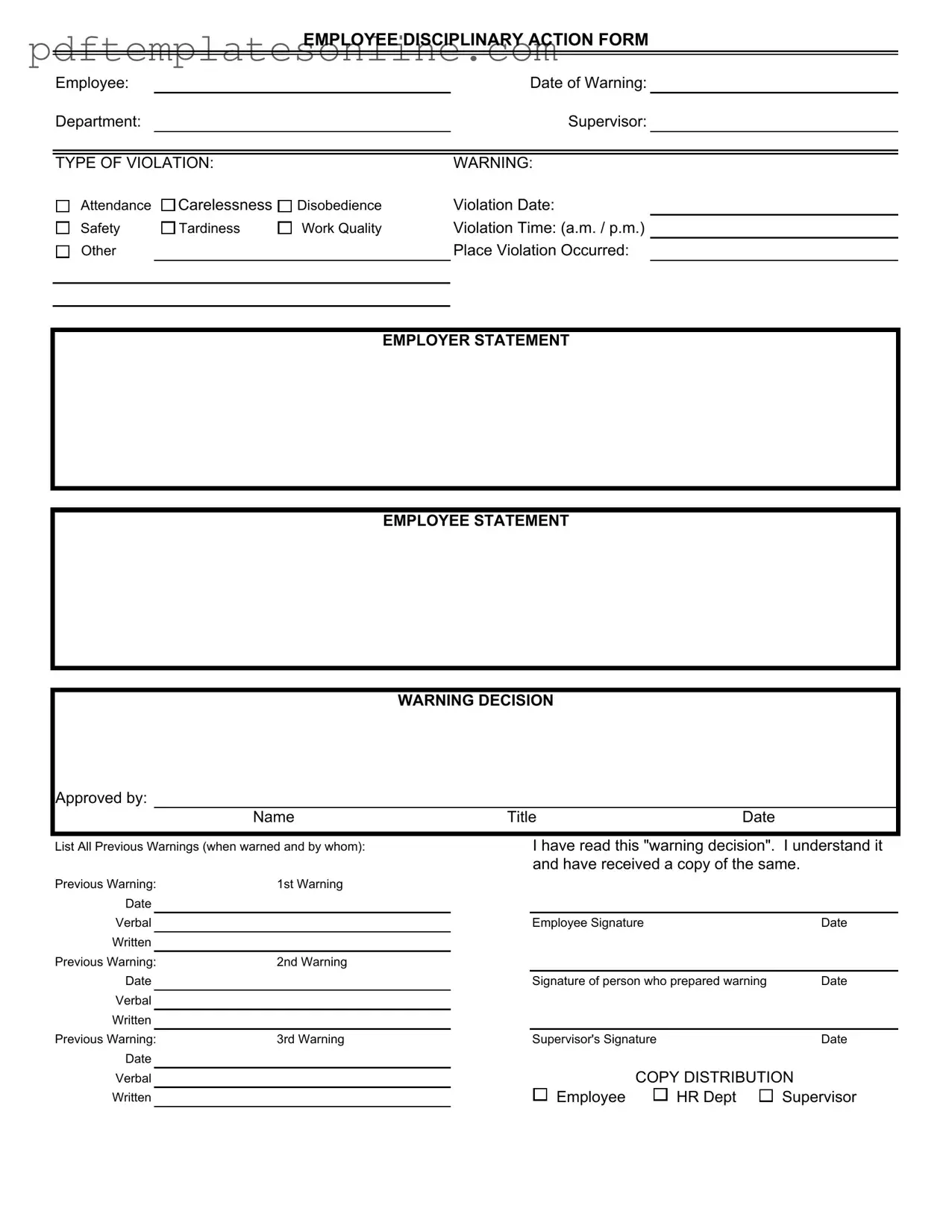Filling out a Disciplinary Action form can be straightforward, but many people stumble on some common mistakes. One frequent error is failing to include all necessary information. Each section of the form, from the employee’s name to the type of violation, must be filled out completely. Omissions can lead to confusion and may undermine the validity of the warning.
Another common mistake is using vague language. When describing the violation, it’s important to be specific. Instead of saying "the employee was careless," detail what actions led to that conclusion. Clear and precise language helps everyone involved understand the situation better.
Many individuals also overlook the importance of the date and time of the violation. Without this information, the context of the warning may be lost. Always ensure that these details are accurately recorded to provide a complete picture of the incident.
In addition, failing to document previous warnings is a mistake that can have serious repercussions. The form includes a section for listing past warnings, and it’s crucial to fill this out. It shows a pattern of behavior and supports the need for disciplinary action.
Another pitfall is neglecting to obtain the necessary signatures. Both the supervisor and the employee should sign the form to acknowledge the warning. Without these signatures, the form may not hold up if challenged later.
Sometimes, people forget to distribute copies of the form correctly. The form should be shared with the employee, HR, and the supervisor. This ensures that everyone is on the same page and has access to the same information.
Moreover, not providing an employer statement can be a missed opportunity. This section allows the employer to explain the reasoning behind the disciplinary action, adding context that can be beneficial for future reference.
Another mistake is using emotional language when describing the violation. The focus should be on facts and behaviors, not personal feelings. Keeping the tone professional helps maintain a constructive atmosphere.
Lastly, failing to review the form before submission can lead to errors. Taking a moment to double-check all entries can prevent misunderstandings and ensure that the form serves its intended purpose effectively.
